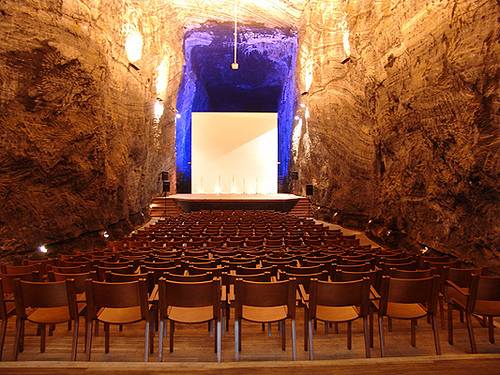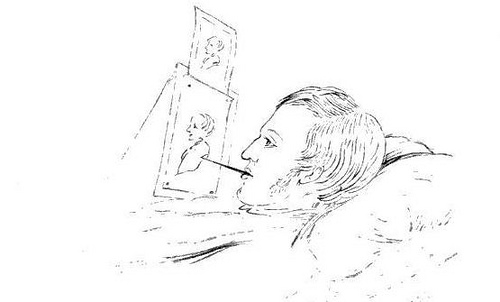In July 1891, an engineer named Charles Wells went to Monte Carlo with £4000, broke the bank 12 times in 11 hours, and came away with a million francs.
He returned in November and made another million.
The casino never discovered his system.
In July 1891, an engineer named Charles Wells went to Monte Carlo with £4000, broke the bank 12 times in 11 hours, and came away with a million francs.
He returned in November and made another million.
The casino never discovered his system.
A man of the name of Desjardins was tried on his own confession, for having admitted that he was an accomplice of Louvel, the assassin of the Duke de Berri. The case was clearly proved. Desjardins set up, as his defence, that he was so notorious for his falsehood, that nobody could give credit to a word he said, and produced a whole host of witnesses, his friends and relatives, who all swore to the fact with such effect, that he was declared Not Guilty.
— Annual Register, 1822

In 1813 Samuel Coleridge received the news of his own death. A gentleman in black had hanged himself from a tree in Hyde Park; authorities had found no money or papers in his pockets, but his shirt was marked “S. T. Coleridge.”
According to Charles Robert Leslie in Autobiographical Recollections, “Coleridge was at no loss to understand how this might have happened, since he seldom travelled without losing a shirt or two.”

What is it with salt miners? Apparently inspired by Poland’s Wieliczka mine, which features a salty Last Supper, Colombia has built an entire salt cathedral, complete with 14 chapels representing the stations of the cross. Don’t they have work to do?
The Indianapolis Journal of Sept. 5, 1891, reports that two icemen were hitching a wagon in Crawfordsville, Ind., at 2 a.m. on Sept. 4 when they saw in the sky “a horrible apparition approaching from the west.” A headless monster, 18 feet long and 8 feet wide, floated 300 feet overhead, apparently propelled by fins. It circled a nearby house, disappeared to the east, then returned, emitting a wheezing, moaning sound. The men fled, but the noise awakened a Methodist pastor, who saw the creature from his window.
Reportedly it returned on the following evening, when hundreds of witnesses saw a flapping “thing” that “squirmed in agony” and made a “wheezing, plaintive noise” as it hovered in the sky.
That’s all we know. The creature, if it really existed, never returned to Crawfordsville.
In 1612, John Donne accompanied Sir Robert Drury to Paris, leaving his pregnant wife in London.
Two days after their arrival there, Mr. Donne was left alone, in that room in which Sir Robert, and he, and some other friends had dined together. To this place Sir Robert return’d within half an hour; and, as he left, so he found Mr. Donne alone; but, in such Extasie, and so alter’d as to his looks, as amaz’d Sir Robert to behold him: insomuch that he earnestly desired Mr. Donne to declare what had befaln him in the short time of his absence? to which, Mr. Donne was not able to make a present answer: but, after a long and perplext pause, did at last say, I have seen a dreadful Vision since I saw you: I have seen my dear wife pass twice by me through this room, with her hair hanging about her shoulders, and a dead child in her arms: this, I have seen since I saw you. To which, Sir Robert reply’d; Sure Sir, you have slept since I saw you; and, this is the result of some melancholy dream, which I desire you to forget, for you are now awake. To which Mr. Donnes reply was: I cannot be surer that I now live, then that I have not slept since I saw you: and am, as sure, that at her second appearing, she stopt, and look’d me in the face, and vanisht.
Donne and Drury immediately sent a messenger to London. He returned to say that Mrs. Donne had borne a dead child at the hour her husband thought he had seen her in Paris.
(From Izaak Walton, Life of Dr John Donne, 1675)

Paralyzed in a fall in 1836, John Carter discovered a talent for art, holding a brush in his teeth and working in bed. The figures below are after Albrecht Dürer.

See also No Handicap, Sarah Biffen, and Prince Randian.

The first chapter of Genesis, written on an egg.
From the Jerusalem Museum.
On May 15, 1879, J. Eliot Pringle, commander of the H.M.S. Vulture, saw something odd in the Persian Gulf:
I noticed luminous waves or pulsations in the water, moving at great speed and passing under the ship from the south-south-west. On looking towards the east, the appearance was that of a revolving wheel with centre on that bearing, and whose spokes were illuminated, and looking towards the west a similar wheel appeared to be revolving, but in the opposite direction.
Eight months later and 1,500 miles to the southeast, off the Malabar coast, Cmdr. R.E. Harris of the steamship Shahjehan witnessed glowing waves of “a peculiar but beautiful milky whiteness”:
In a short time the ship was completely surrounded with one great body of undulating light, which soon extended to the horizon on all sides. … If the sea could be converted into a huge mirror, and thousands of powerful electric lights were made to throw their rays across it, it would convey no adequate idea of this strange yet grand phenomenon.
Harris called his vision “the most remarkable phenomenon that I have ever seen at sea”; Pringle called his “beautiful and striking.” What they were, precisely, is not clear.
(From Nature, July 24, 1879, and Charles Frederick Holder, Living Lights: A Popular Account of Phosphorescent Animals and Vegetables, 1887. See also A Phosphorescent Sea.)

Lord [Francis Henry] Egerton [1756-1829] is a man of few acquaintance, and very few of his countrymen have got as far as his dining-hall. His table, however, is constantly set out with a dozen covers, and served by suitable attendants. Who, then, are his privileged guests? No less than a dozen of favourite dogs, who daily partake of milord’s dinner, seated very gravely in arm-chairs, each with a napkin round his neck, and a servant behind to attend to his wants.
— John Timbs, English Eccentrics and Eccentricities, 1875